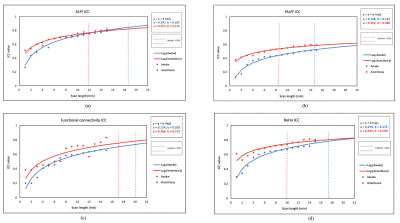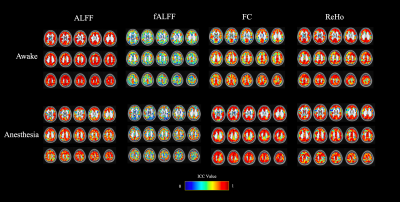Faezeh Vedaei1,2, Mahdi Alizadeh1, Sara Thalheimer1, Victor Romo3, Feroze Mohamed4, and Chengyuan Wu1
1Department of Neurosurgery, Thomas Jefferson University, Philadelphia, PA, United States, 2Department of Bioengineering, Temple University, Philadelphia, PA, United States, 3Department of Anesthesiology, Thomas Jefferson University, Philadelphia, PA, United States, 4Department of Radiology, Thomas Jefferson University, Philadelphia, PA, United States
1Department of Neurosurgery, Thomas Jefferson University, Philadelphia, PA, United States, 2Department of Bioengineering, Temple University, Philadelphia, PA, United States, 3Department of Anesthesiology, Thomas Jefferson University, Philadelphia, PA, United States, 4Department of Radiology, Thomas Jefferson University, Philadelphia, PA, United States
Reliability of resting-state fMRI metrics including ALFF, fALFF, functional connectivity, and ReHo improves under anesthesia than in awake state. Also, the scan length needed to optimize ICC of these metrics is lower under anesthesia than in awake state.

